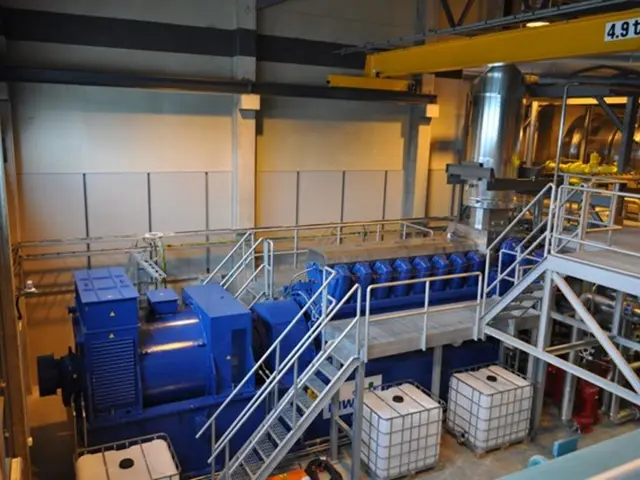Understanding the Cosmos and Energy Revolution through Plasma Physics: A Keystone Discipline
In the realm of scientific discovery, plasma physics stands out as a fascinating field that explores the fourth state of matter. This state, composed of charged particles such as electrons, ions, and neutral atoms, can be found in various natural and man-made environments, from lightning to fluorescent lights and plasma televisions.
One of the most significant advancements in plasma physics is the International Thermonuclear Experimental Reactor (ITER), the largest tokamak in the world, currently under construction in France. Tokamaks, devices using strong magnetic fields to confine plasma in a toroidal shape, are instrumental in the study of nuclear fusion, a promising source of clean and abundant energy that could potentially replace fossil fuels.
The study of plasma physics is not limited to the understanding of its existence. It also delves into the practical applications of this versatile state of matter. For instance, plasma-based technologies are employed for materials processing and pollution control, selectively removing contaminants from gases and liquids, making it an effective tool for air and water purification.
In the realm of medicine, plasma is used in plasma medicine for treating various diseases. Its ability to modify the surfaces of materials can improve their properties, making them more resistant to wear and corrosion.
The creation of plasma from a metal is no small feat. It requires the application of a strong electric field or heating the metal to extremely high temperatures. The electric field strength necessary for this process is approximately 800,000 times greater than that of a typical electrical outlet.
The ionization of metals, such as titanium, presents a unique challenge due to their high ionization energy. However, titanium's excellent resistance to corrosion and erosion makes it a popular choice for plasma-facing components in fusion reactors and other high-temperature plasma environments.
Plasma physics has a rich history, dating back to the early 20th century, with Irving Langmuir coining the term "plasma" in the 1920s. Today, plasma physicists use mathematical models, computer simulations, and experimental methods to describe the behavior of plasma, from plasma turbulence to the interaction of plasma with electromagnetic fields.
Laser facilities are crucial in plasma physics research, providing insights into the behavior of plasma in various conditions. These facilities allow scientists to study plasma under controlled conditions, paving the way for a deeper understanding of this complex state of matter.
As we continue to unravel the mysteries of plasma, its potential applications in fusion energy, materials processing, pollution control, and medicine promise a brighter, cleaner, and more sustainable future. The journey of plasma physics is far from over, and the discoveries yet to come are as exciting as the ones we have already made.








